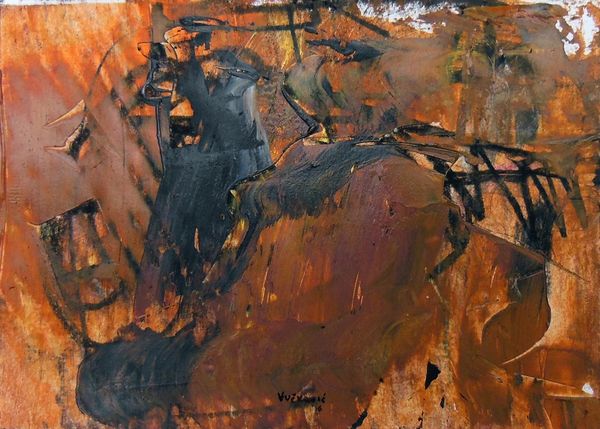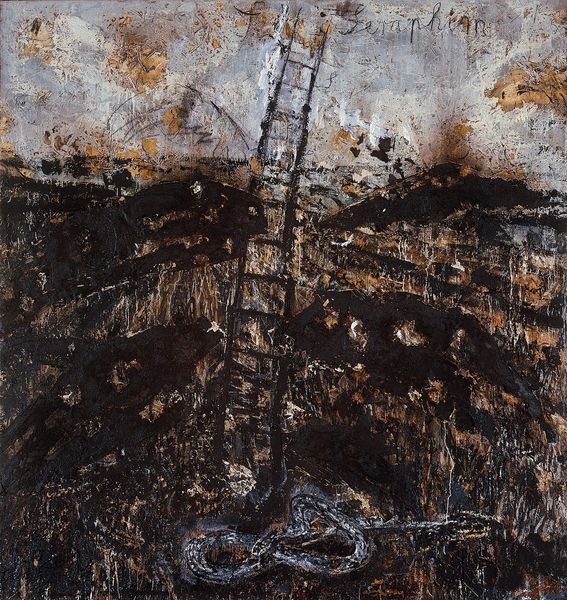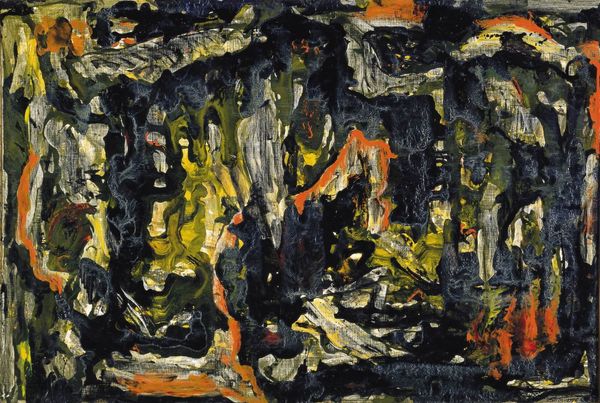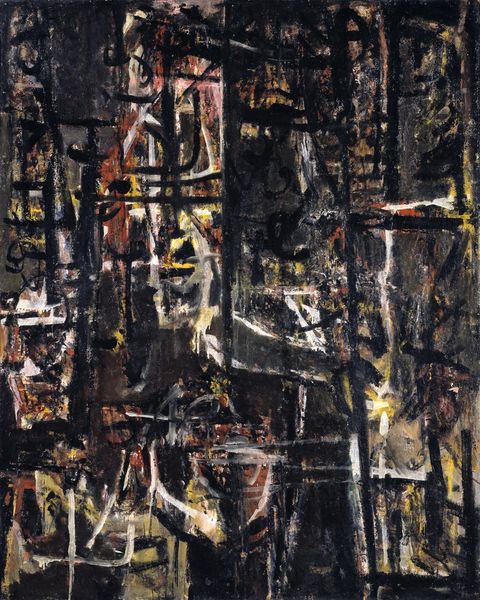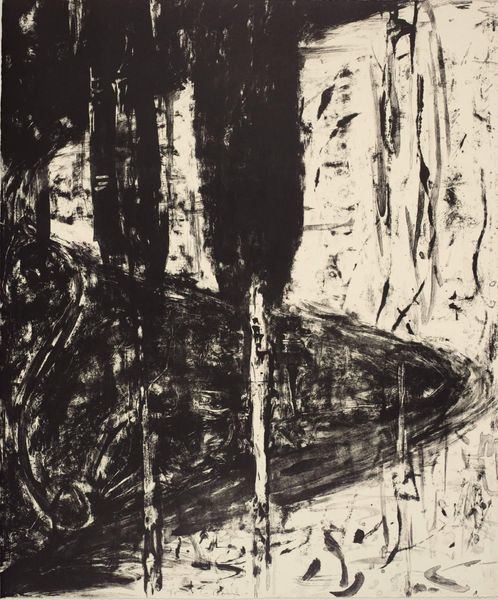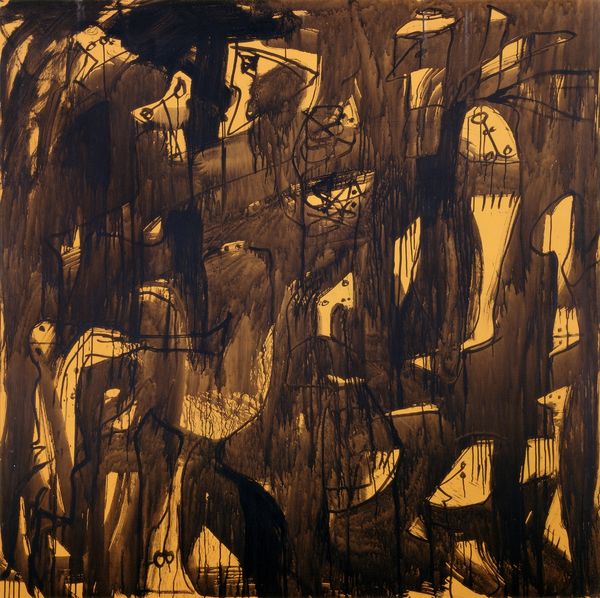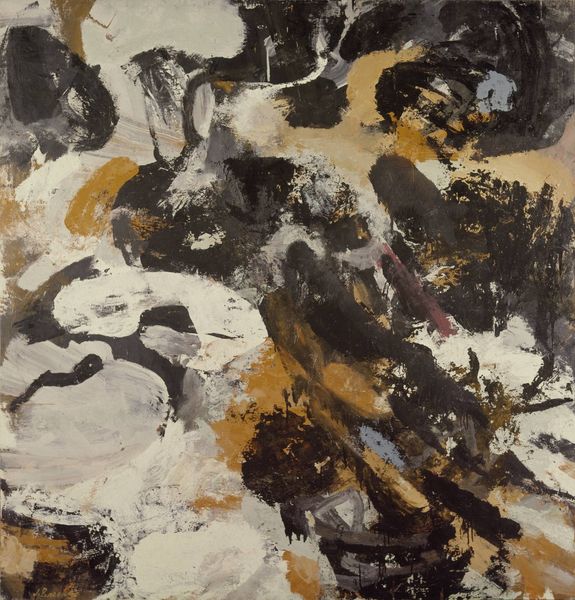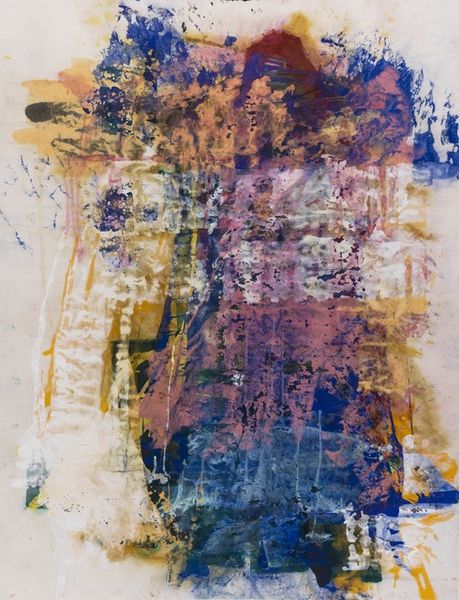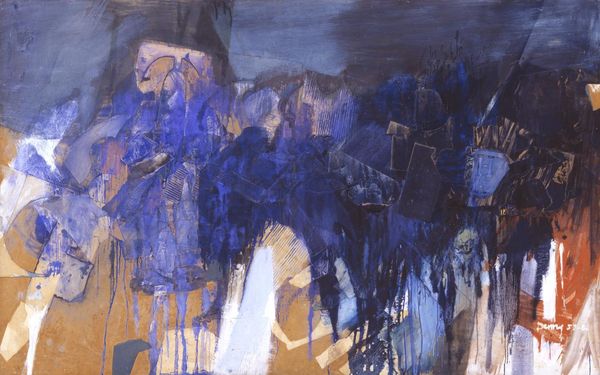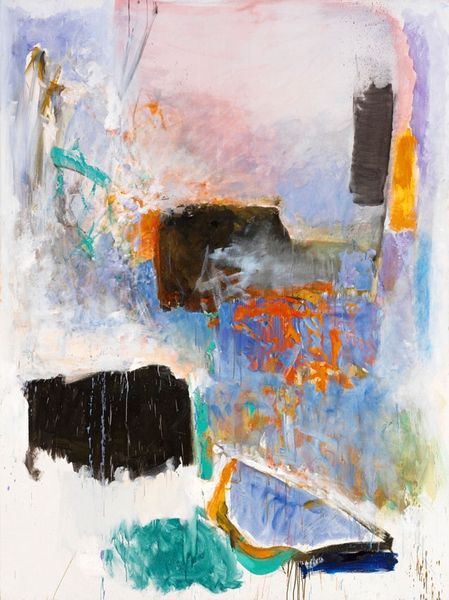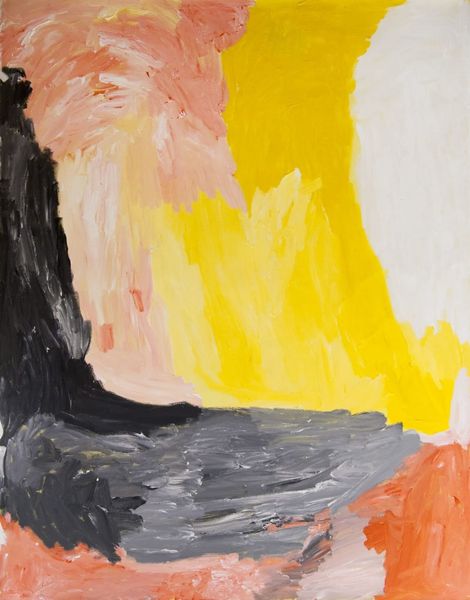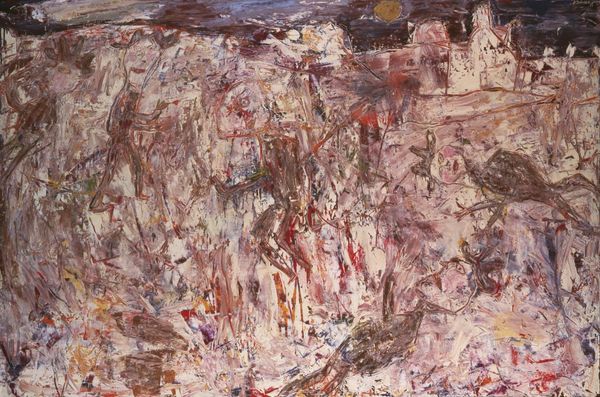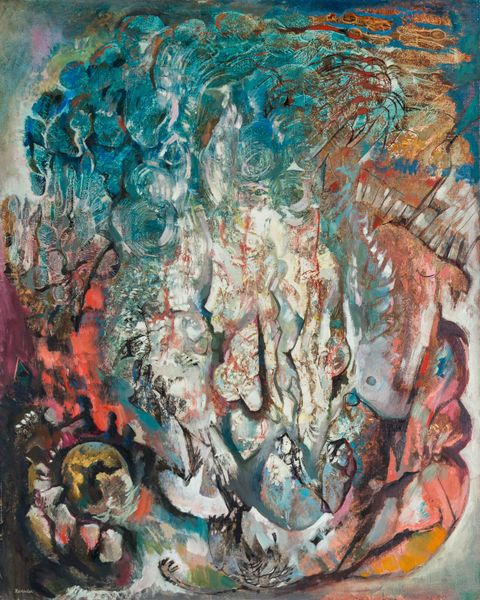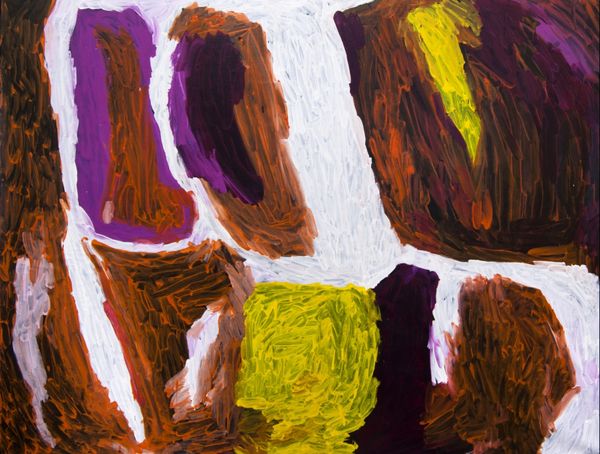
#
capitalist-realism
Copyright: Modern Artists: Artvee
Editor: Here we have Gerhard Richter's "16.3.89", created in 1989 using acrylic paint. The heavy impasto gives it such a visceral quality, almost violent in the way the colours clash and blend. How do you interpret this work? Curator: The date is crucial, isn’t it? 1989. Richter, a German artist, producing such an emotionally charged abstraction in the year the Berlin Wall fell… Do you see any relationship between that historical moment and the expressive chaos of the piece? Could this be a visual representation of a society in flux? Editor: That's a fascinating thought. I hadn’t considered it in that context. I was more focused on the pure emotional impact of the brushstrokes themselves. Curator: Consider, then, how artists like Richter navigate trauma, both personal and collective. The physical act of layering and scraping paint might be seen as a process of burying the past while simultaneously unearthing its complexities. Does the materiality of the work speak to ideas around cultural memory and the politics of forgetting? Editor: It’s interesting you say that. Looking at it again, the underlying layers of colour – the red peeking through – almost feel like repressed memories fighting to surface. Curator: Precisely. And think about German Expressionism. How might that legacy of conveying raw, often distorted emotion play into this abstract language? Editor: That makes me think about how even abstract works can carry such a strong historical and cultural weight, reflecting the tensions and transformations of a specific time and place. Thanks! Curator: Indeed. Seeing art as intertwined with sociopolitical circumstances, we begin to consider that the absence of figurative representation may not signify an escape from reality, but rather, a deeper engagement with it. A valuable takeaway, I'd say!
Comments
No comments
Be the first to comment and join the conversation on the ultimate creative platform.
